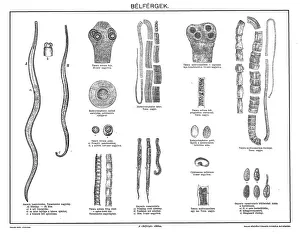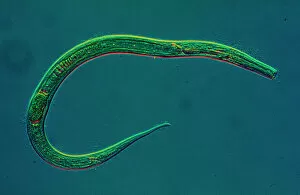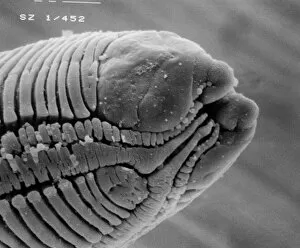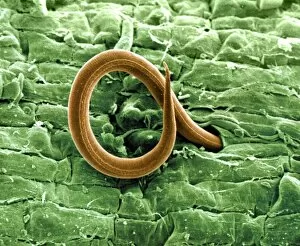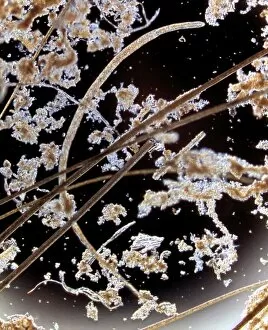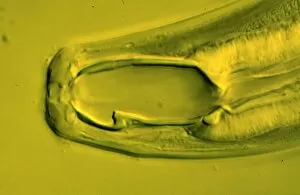Nematode Worm Collection
"Nematode Worms: Unveiling the Intricate World Beneath Our Feet" Gastrointestinal nematodes, commonly known as nematode worms or roundworms
All Professionally Made to Order for Quick Shipping
"Nematode Worms: Unveiling the Intricate World Beneath Our Feet" Gastrointestinal nematodes, commonly known as nematode worms or roundworms, are a fascinating group of organisms that inhabit various ecosystems worldwide. From the notorious Ascaris lumbricoides, also known as the human roundworm, to the intricate soil structure and fauna they influence, these tiny creatures play a significant role in our environment. Intriguingly diverse in form and function, nematode worms exhibit an array of captivating features. Take for instance the root-knot nematode larva captured under scanning electron microscopy (SEM), showcasing its unique morphology. Similarly mesmerizing is Trichinella spiralis - a parasitic roundworm responsible for trichinellosis - which demonstrates its ability to adapt and survive within host bodies. Not limited to terrestrial environments alone, Monochus aquaticus is an aquatic nematode species that thrives in freshwater habitats. Its presence highlights how these remarkable creatures have successfully adapted to different ecological niches over millions of years. Fossilized evidence also sheds light on their ancient existence. The discovery of a roundworm preserved in Baltic amber provides invaluable insights into their evolutionary history and offers glimpses into prehistoric ecosystems where they once roamed. Collecting nematode worms has become an essential endeavor for researchers seeking to understand their biology further. These efforts contribute significantly towards expanding our knowledge about these enigmatic organisms and unlocking potential applications such as biocontrol agents against harmful pests or even medical breakthroughs. Moreover, studying soil samples using SEM reveals another intriguing aspect: algae thriving amidst this complex microcosm. This symbiotic relationship between nematodes and algae showcases nature's intricacies at work while highlighting how interconnected life forms can be within seemingly ordinary environments like soil. As we delve deeper into understanding the world of nematode worms, we unravel secrets hidden beneath our feet.

